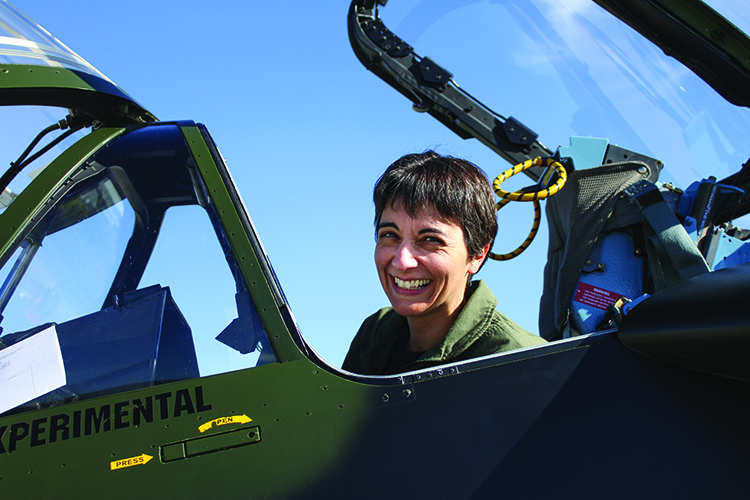As a San Francisco Bay Area resident, Laura Iraci ’92 wants you to know she doesn’t love wildfires or air pollution. But as a NASA Ames Research Center scientist studying gases and their chemical reactions in the atmosphere, she values the data both can produce. For this summer’s wildfire season, she and colleagues plan to install rooftop monitoring systems at their Silicon Valley location. “We’re excited to better understand the air we breathe,” she says.
Iraci leads a group focusing on air and where human pollution goes. “I like to understand how the atmosphere and our environment work,” she says.
Taking measurements from equipment attached to research planes flying over the Pacific, in California, and in parts of Nevada, Iraci and her team gather information on where air arrives from. “It may have been in Asia a week ago, or in Napa in a wildfire,” she says. “You can see the traces of our human activity everywhere on the planet.” They then pass the information off to a crew who uses it to develop calibration systems for satellites to monitor long-term global climate change. “Having that worldview of ‘We’re all in this together’ shows us where we can do better, globally, since we know air pollution is a shared problem,” she says.
Working with the California Air Resources Board, her team was a recent recipient of a NASA grant to learn whether air arriving in the United States has stayed the same or changed over time. “We think it’s different, but we want additional data. If the air arriving from over the Pacific already has ozone pollution in it, efforts in California can’t solve that problem. If we’re not emitting that pollution, we need to find out where it’s coming from so we can deal with the problem,” Iraci says. She and colleagues also recently published research on ScienceDirect, linking their work to forest health in the Sierra Mountains.
With more than 10 years of data from two columns of air near NASA Ames’ location at the south end of the San Francisco Bay, Iraci’s team has collected ozone measurements on days with and without obvious pollutants such as wildfire smoke, to provide comparison. Concentrating on trace gases — those beyond the huge proportion (99.934%) that are nitrogen, oxygen, and argon — they monitor ozone, carbon dioxide, and methane. A gas like ozone serves a different role depending on its level in the atmosphere: High up, it provides a shield against the sun’s ultraviolet rays, but at ground level, it affects breathing and sensitive vegetation when sunlight and emissions such as vehicle exhaust produce chemical reactions.
In 2022, Iraci and colleagues plan to learn more in South Korea by measuring carbon monoxide and nitrous oxide — “human tracers” that result from burning fuel and other human uses — as the gases travel on air currents that are lifted high and moving quickly across the Pacific Ocean during the Asian summer monsoon. Iraci and other scientists will use different instruments and an alternate location to measure a familiar subject: where human pollution goes, she says.
Iraci found her way to NASA after seeing a summer internship flyer posted in Lathrop Hall. In undergraduate science classes, she did hands-on work that prepared her for graduate work. She emerged with a solid understanding of organic chemistry — which she now uses weekly and recently consulted for information on Venus’ atmosphere. “There are reactions in the particles in our atmosphere and others that really come back to what I learned from professors [John] Cochran and [Ernie] Nolen in organic chem at Colgate.”
Iraci looks forward to the work the next generation of budding scientists will tackle. “There are problems to solve, whether they’re air pollution, new energy sources, or what to do with our recycling or plastics in the ocean. We’ll need all the ideas and people we can get to solve these problems.”

